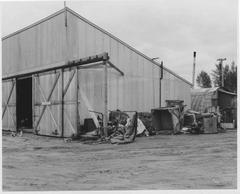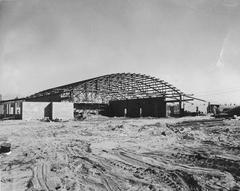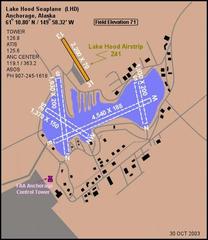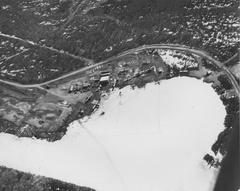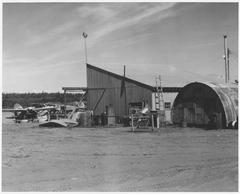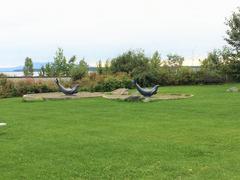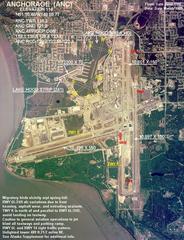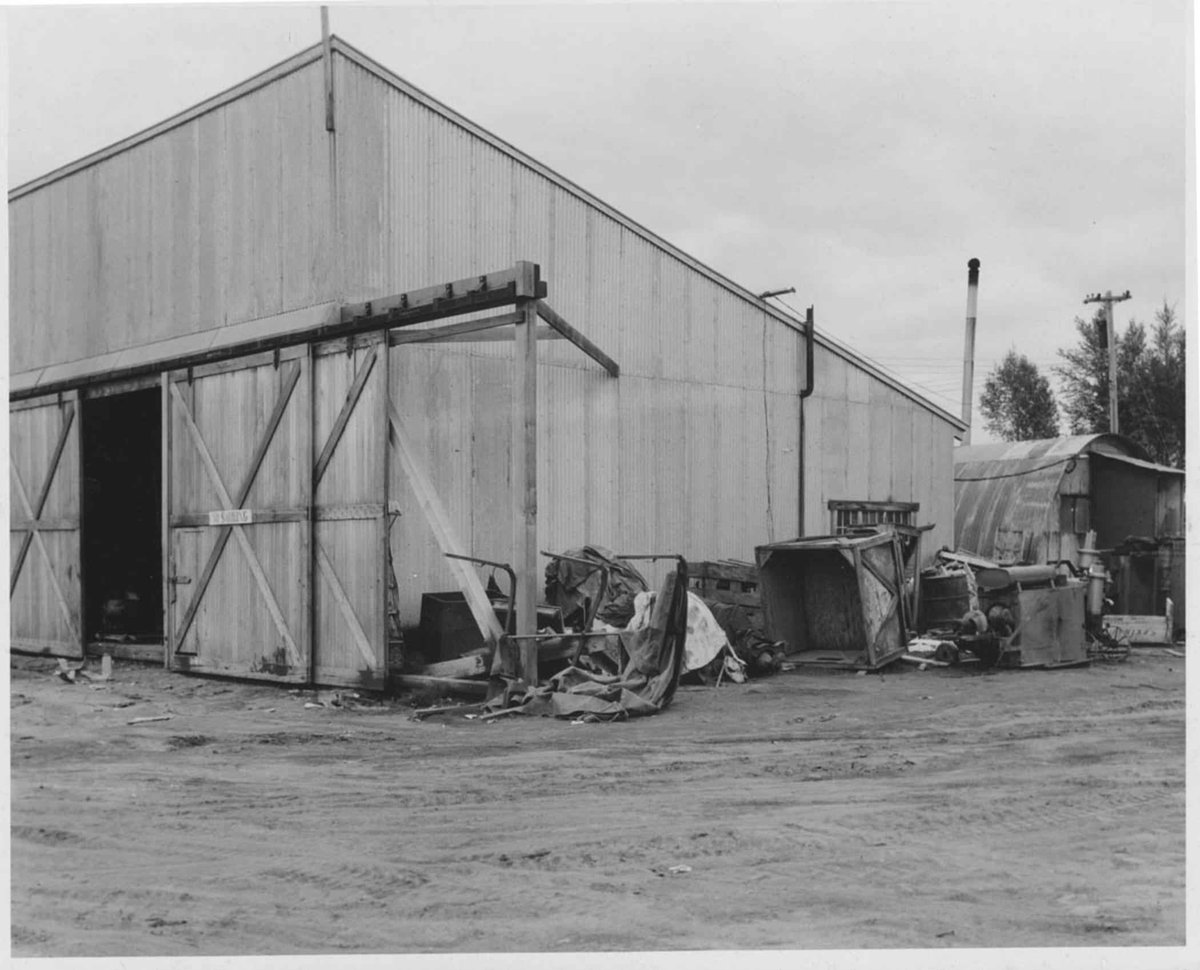
Lake Hood Seaplane Base Anchorage, Alaska: Visiting Hours, Tickets, and Travel Guide
Date: 15/06/2025
Introduction: The Gateway to Alaska’s Skies
Lake Hood Seaplane Base, situated just four miles west of downtown Anchorage, stands as the world’s busiest and largest seaplane base, playing a pivotal role in Alaska’s aviation history and culture. Established nearly 90 years ago, Lake Hood has become an essential hub for connecting Alaska’s expansive, often roadless wilderness to Anchorage and beyond. Its strategic location, adjacent to Ted Stevens Anchorage International Airport, enables seamless integration of floatplane and wheeled aircraft operations—a vital link for both commercial and private aviation in the region (AAM Endowment; Seaplane Pilots Association).
Visitors to Lake Hood can immerse themselves in a vibrant aviation atmosphere, complete with nearly 200 daily flight operations, a diverse fleet of classic and modern aircraft, and public viewing areas that offer exceptional opportunities for plane-watching and photography. The base is also a living tribute to Alaska’s bush flying heritage and indigenous roots, making it a must-visit for aviation enthusiasts and curious travelers alike (Simple Flying; Anchorageshoretours).
This guide covers Lake Hood’s historical evolution, operational details, visiting hours, ticketing for scenic flights, accessibility, and nearby attractions like the Alaska Aviation Museum. It also highlights the base’s economic, cultural, and environmental significance within Anchorage and the broader Alaskan community (Rust’s Flying Service; Anchorage.net).
Historical Background and Strategic Development
Early Years and Location
Lake Hood began as a modest waterlane serving Anchorage’s early aviation needs during Alaska’s territorial era. The surrounding wilderness, largely inaccessible by road, made aviation indispensable for transportation and economic development. In 1938, a channel was constructed between Lake Hood and Lake Spenard to create a longer waterlane, marking the site’s transformation into a major aviation center (PhotoRecon).
Integration and Expansion
The 1940s and 1950s brought significant growth, including the construction of a gravel runway and the opening of Anchorage International Airport (now Ted Stevens Anchorage International Airport) in 1953. New ramps and taxiways allowed amphibious aircraft to move seamlessly between water and land, and separate air traffic control towers managed both facilities until the 1964 earthquake necessitated temporary consolidation (AAM Endowment; PhotoRecon).
Modernization
By the 1970s, infrastructure enhancements included a new north-south gravel strip and expanded floatplane parking. Today, Lake Hood features two main water runways, a gravel airstrip, and over 1,000 aircraft parking spots, supporting robust year-round operations (AAM Endowment).
Operations and Aircraft
Lake Hood maintains a diverse fleet of classic bush planes and modern floatplanes, accommodating float, wheel, and ski-equipped aircraft. Daily operations average nearly 200 flights, with summer months seeing the highest traffic. The base supports both private and commercial aviation, including flightseeing tours, wilderness transport, and resource missions. Roads around the base are shared with taxiing planes, and public viewing areas offer close-up experiences of Alaska’s dynamic aviation scene (PhotoRecon).
Visitor Information: Hours, Tickets, and Accessibility
Visiting Hours
- General Access: Public viewing areas are open from dawn to dusk, year-round, with peak activity from June to August.
- Official Facilities: The Seaplane Base office and viewing areas typically operate from 8:00 AM to 6:00 PM, though hours may vary by season (Seaplane Pilots Association).
Tickets and Tours
- Admission: Free to visit public areas; no general entrance fee.
- Flightseeing Tours: Tickets are available directly from operators like Rust’s Flying Service, with prices starting around $150 per person for scenic flights. Bear viewing and fishing trips are offered at higher rates. Advance reservations are highly recommended in summer (Rust’s Flying Service).
Accessibility
- Parking: Ample parking is available near public viewing areas.
- Mobility: Accessible pathways and ramps are in place at the base and the Alaska Aviation Museum. Wheelchair assistance can be arranged with tour operators if notified in advance.
- Location: Easily reached by car, taxi, rideshare, or public transit from downtown Anchorage (Anchorageshoretours).
What to Expect: Atmosphere and Seasonal Activity
Lake Hood buzzes with activity, especially in summer, when daylight stretches up to 19 hours and flightseeing tours are in high demand. Winter brings a shift to ski-equipped aircraft operating on frozen lakes—a unique spectacle for visitors. The base offers safe, well-marked viewing platforms with interpretive signage, and the nearby Alaska Aviation Museum provides an enriching historical perspective (Anchorage.net).
Nearby Attractions
- Alaska Aviation Museum: Located on Lake Hood’s shore, featuring restored aircraft, exhibits, and guided tours.
- Tony Knowles Coastal Trail: A scenic 11-mile trail ideal for walking and wildlife viewing.
- Downtown Anchorage: Offers cultural sites, shopping, and dining just a few miles away.
Indigenous Heritage and Cultural Significance
Lake Hood and Lake Spenard occupy lands traditionally used by the Dena’ina Athabascan people, with the indigenous name Niłkidal’iy reflecting their deep-rooted connection to this area (Wikipedia). Today, visitors are encouraged to recognize and honor this heritage as part of the region’s ongoing story.
Environmental Stewardship
Lake Hood’s proximity to Anchorage’s urban and natural environments requires careful management of wildlife and water quality. Creative solutions, such as the use of pigs to control waterbird populations in the 1990s, highlight the unique challenges of balancing aviation safety with ecological stewardship (Simple Flying).
Economic and Social Impact
Lake Hood is a key economic engine for Anchorage and Alaska. The base supports hundreds of jobs, generates significant payroll and tax revenue, and serves as a critical gateway for tourism, resource transport, and community services (Alaska DOT Economic Impact Report; Tourist Secrets).
Practical Tips for Visitors
- Dress in layers and bring waterproof clothing, especially in shoulder and winter seasons.
- Arrive early for check-in and to explore the base.
- Pack light due to aircraft space limitations.
- Respect all safety signage and stay clear of operational areas.
- Photography: Early morning and late afternoon offer the best light for capturing floatplane action and mountain backdrops.
Frequently Asked Questions (FAQ)
Q: What are the visiting hours for Lake Hood Seaplane Base?
A: Public areas are open from dawn to dusk year-round; tour operator hours may vary.
Q: Is there an entrance fee?
A: No, access to public areas is free.
Q: How do I book a flightseeing tour?
A: Tickets can be reserved online or at operator offices; advance booking is recommended in summer.
Q: Is the base accessible to visitors with disabilities?
A: Yes, with accessible paths and ramps; contact operators ahead for boarding assistance.
Q: Can I swim at Lake Hood?
A: No, swimming is not allowed due to safety considerations (Simple Flying).
Q: What is the best time to visit?
A: Late May through early September offers peak activity, long daylight, and the widest tour availability.
Image Gallery
Floatplanes at Lake Hood Seaplane Base during summer.
Planes using the ice runway in winter at Lake Hood.
Visitors enjoying plane-watching at Spenard Beach Park.
Summary and Visitor Recommendations
Lake Hood Seaplane Base is a cornerstone of Alaska’s transportation, culture, and economy, embodying the spirit of the Last Frontier through its dynamic aviation operations and vibrant community. From its early development to its current status as the world’s largest seaplane base, Lake Hood remains essential for connecting remote communities, supporting tourism, and fostering economic growth (AAM Endowment; Simple Flying; Seaplane Pilots Association). The base’s year-round activity—encompassing floatplanes in summer and ski-planes in winter—and its integration with Anchorage International Airport ensure both accessibility and operational efficiency.
Visitors benefit from free access to public viewing areas, the opportunity for flightseeing tours, and the enriching educational experiences offered by the Alaska Aviation Museum. Lake Hood also exemplifies a successful balance between economic development, environmental stewardship, and respect for indigenous and cultural heritage (Alaska DOT Economic Impact Report).
For the latest information on visiting hours, tickets, and events, download the Audiala app, follow official channels, and explore related articles to plan a safe, enjoyable, and unforgettable Alaskan aviation adventure (Anchorage.net; Rust’s Flying Service).
Sources
- AAM Endowment
- Seaplane Pilots Association
- Rust’s Flying Service
- Anchorageshoretours
- Alaska DOT Economic Impact Report
- Simple Flying
- Anchorage.net
- Wikipedia
- PhotoRecon
- Tourist Secrets
- Alaska.org
